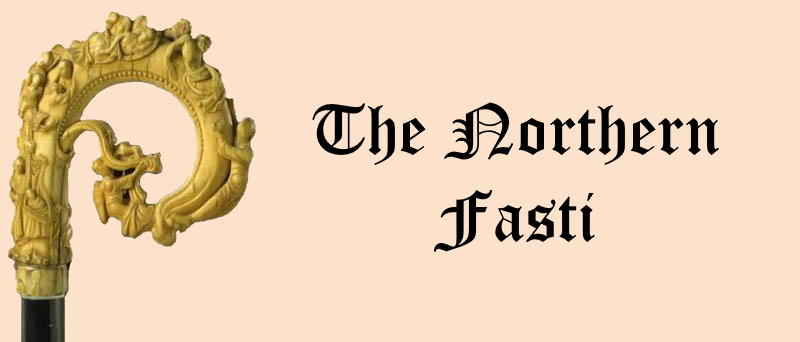Elgin Deanery
Spynie
Parish Church: OS Ref: NGR NJ 229655 H.E.S. No: NJ26NW 9 Dedication: The Holy Trinity.
Associated Chapels: Kintrae {NGR NJ 169652}; Spynie Castle {NGR NJ 231658}.
Spynie Church lies at the eastern end of a ridge which rises to a height of some 130m at its western end, terminating at Quarrywood Hill
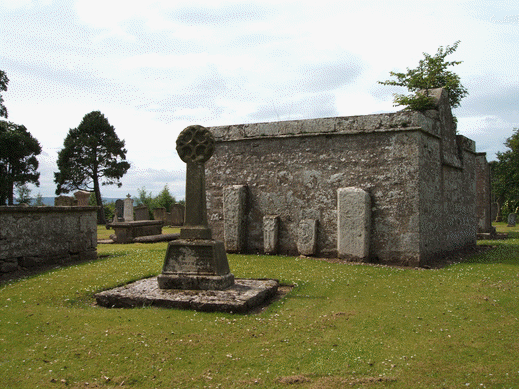

The 'Celtic' cross supposedly marks the eastern end of the church when it was a cathedral.
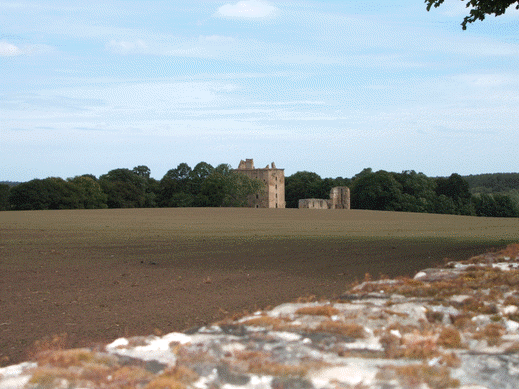
heading north towards the Bishop's Palace.
In the 1980s and 1990s, significant excavations were made around the castle in order to determine the state of the stonework. During these excavations, considerable evidence was foud to show that the site, and its environs, had been used by prehistoric peoples who had estalished a settlemet here. This added to stray finds made in the 1800s ( a pottery urn and three bronze axes, now in Elgin Museum).
It is believed that there was a church here, at Spynie, from the times of the Early Church but the oldest church in the parish is thought to be that which lay at Kintrae
In 1189x98, Spynie became one of the first prebends of the cathedral. Kintrae was added to this prebend in 1224-6. This was a simple prebend provided to a canon who had no other function in the Chapter of the cathedral. The canon was required to keep a 'stallar' in the choir who carried out the canon's functions when he was absent.
It is well-known that the bishops of Moray chose Spynie as an appropriate location for their Castle or Episcopal Palace, and over the course of time, a small village grew up to accomodate the various individuals who were required to provide for 'the master'. The locality had a number of important advantages to offer. There was good sandstone for building available only a matter of a few hundred metres from the chosen location; it had its own harbour which provided for vessels engaged in fishing, both in the Loch of Spynie, and further out in deep water; there was direct access to the sea; the location had excellent agricultural land nearby; there was easy access to Elgin which was only a matter of a few kilometers away; it was part of the Barony of Spynie (which became a Regality) that was one of the secular lordships enjoyed by the successive bishops of Moray.
The Church at Spynie was made into a cathedral church in 1207 - one of three churches that acted at various times as the cathedral of the diocese (Birnie, Kintrae, and Spynie). But it only held this 'honour' for a brief period from 1207-1224.
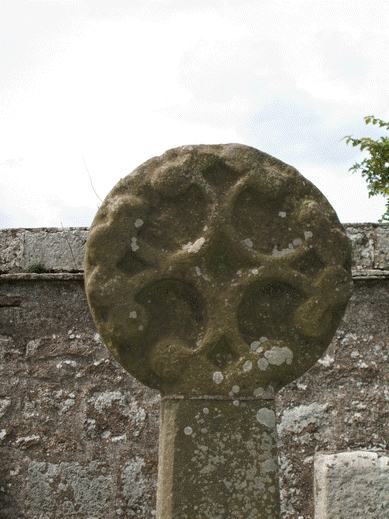
The last remains of the building, a Gothic gable, fell about 1850. Mackintosh, writing in 1924, stated that the foundations were traced and were found to be only about 74 feet by 35 feet, and showed a small church of simple character apparently built of clay except for the east gable.1 At one time, the later parish church boasted a few ornamental features, doorways and a window adorned with Gothic mouldings: these in 1735 were built into the Church of New Spynie at the western end of the parish
An annual Fair was held at Spynie every Trinity Sunday to celbrate the dedication of the church and parish to the Holy Trinity.
In 1907, the New Spynie Parish Council had the ground within the churchyard of Old Spynie "thoroughly put to rights". Mackintosh reported that, "In doing this a few medieval grave-stones with crosses were discovered, four of which were preserved on the outside of the east wall of the Rothes enclosure." This latter enclosure belongs to the Earls of Rothes (Leslie).2
| Name | OS Grid Ref. | Extent | Comment |
|---|---|---|---|
| Aldroughty | NJ 185624 | ½ dabhach. | On the southern slopes of Quarrywood Hill, on the north bank of the R. Lossie. |
| Medilhalch | NJ 209630 | ½ dabhach. | The lands of Morriston Estate in Elgin beside the R. Lossie. |
| Information above from Ross (2003).16 Locations by David at Cushnieent. | |||
1501. A bull of Pope Alexander VI, dated 23 February, 1498, addressed to Andrew Stewart, Bishop of Moray, was promulgated at a gathering held within the chapel of the episcopal palace of Spynie on 11 February, 1501. Bishop Andrew addressed the promulgation to his colleagues nominated by the Pope - the Bishop of Aberdeen, and the Official of Ross, to the Bishop of Ross, as diocesan of Beauly Priory, and to the Abbot and Convent of Val des Choux, the Superior of the Valliscaulian Order, as well as to the Subprior and Convent of Beauly Priory. The Bishop of Moray read what was before him - the Papal Bull - in full, and then, being requested by Dougal (Rorieson) to execute it, and being satisfied with the candidate's fitness, the Bishop admits him as a monk and brother of the monastery of Beauly, clothes him with the habit prescribed by the rule, and then receives his profession as a member of the Valliscaulian Order. Thus admitted, the bishop next confers on him, and invests him by the placing of the episcopal ring on his finger with, the office of prior of the house, having administered to him the oath of allegiance (to the Pope) transmitted from Rome. This was all recorded by one Donaldus Thomæ, a presbyter of Moray Diocese, who was also a Notary Public by Papal, Imperial and Royal authority. All was done in the presence of a significant collection of individuals6 The fact that there were at least sixteen people present at this event gives us some idea of the size of the Episcopal Chapel at Spynie.
Kintrae
Inshhagarty ("the Priests' Island") lies about half a kilometer to the west of Kintrae. It is now but a slight rise in the landscape, but it must have been an island, or Holm, when the surface of the Loch of Spynie was much higher than it is now.
Spynie Castle - Episcopal Chapel and Private Oratory
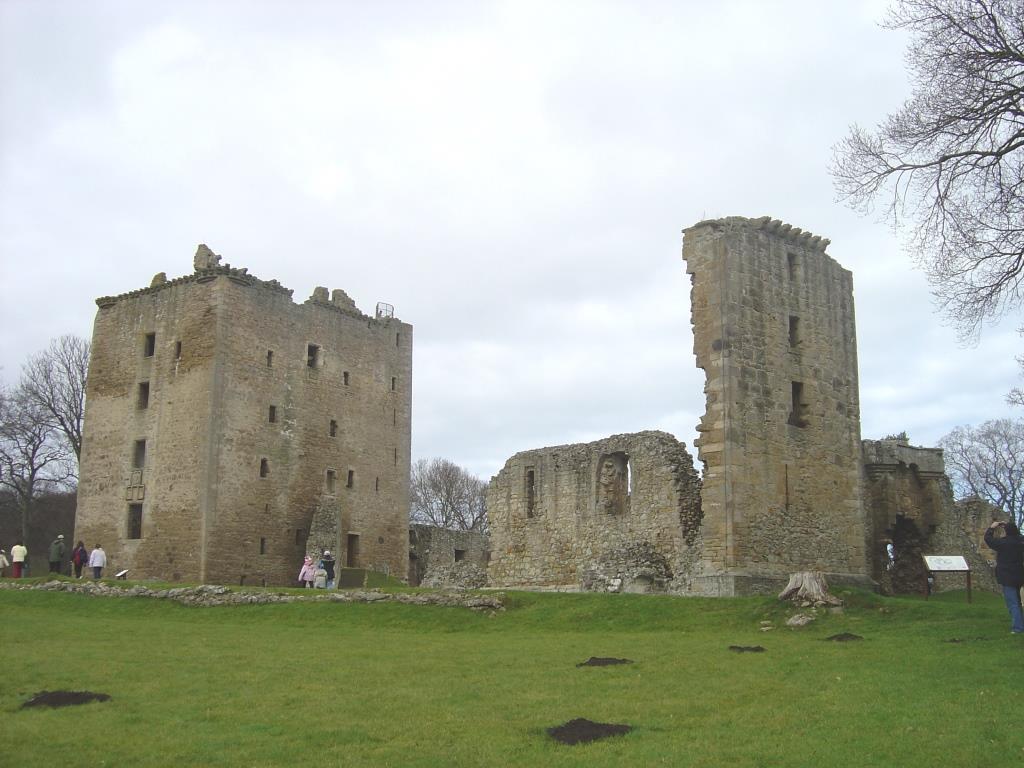
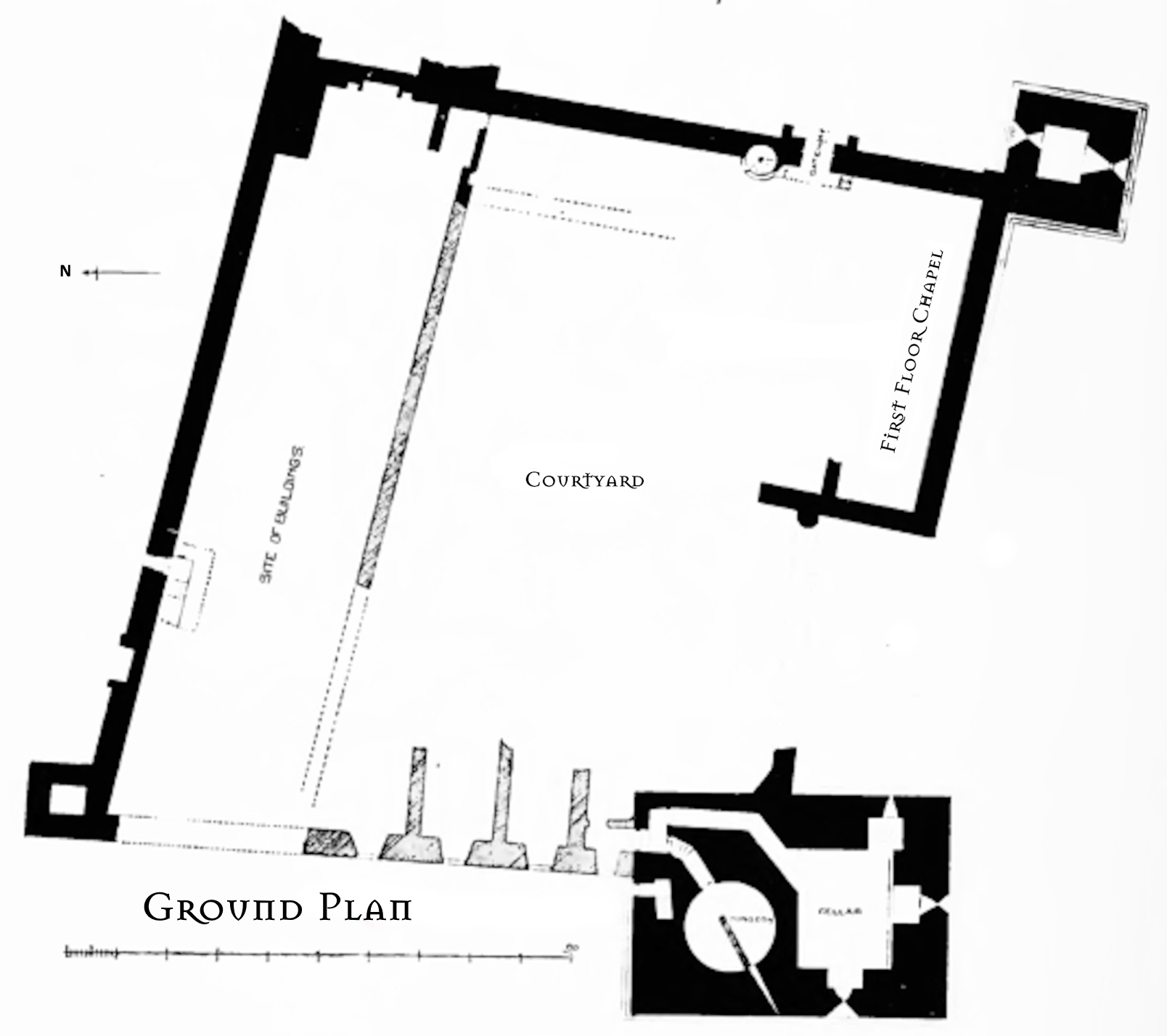
1. Mackintosh (1914), p. 262. Return to Text
2. Mackintosh (1914), p. 263. Mackintosh may have been mistaken here since this burial-enclosure was erected by a scion of the Earl of Rothes, Robert Leslie, who had established himslef in the nearby House and Lands of Findrassie
4. HES (2011), p. 9. Return to Text
5. In the seventeenth century there was a family of bronze casters at Middelburg in Zeeland called Burgerhuys who carried on the tradition of their forefathers. In their foundry in the refectory on the Abdijplein they cast bells, levers and artillery. They also made decorative cannons, two of which are now displayed on the Abdijplein. One signed by Michael Burgerhuys and the other by his son, Johannes Burgerhuys. The family business existed for four geerations from 1594 to 1679. When Johannes died in 1679, the business closed down, but was re-established in 1754. Return to Text
6. Batten (1877). p. 113-121. Present at the 'promulgation' were - Andrew Stewart, Bishop of Moray and great-uncle of the King; Dougal Rorieson, Clerk in Ross Diocese, possibly Vicar of Logy Wester and Urquhart; Robert (Harrower), Prior of Pluscardine Priory; Alexander, Prior of the Preaching Friars (Dominicans) at Elgin; Adam Forman, Subprior of Pluscardine; Tomas Leuinston, Canon of Moray; Andrew de For(r)es, vicar of Abernethy and Notary Public; James Brown, Vicar of Cromdale; John Ricardi, Vicar of Laggan; John Malcolm, Notary Public; William Stewart, Henry and Alexander Bonkill, Donald Finlay, and Donald McCoule, armigers (squires), along with various others. Return to Text
16. Ross (2003), Return to Text
Bartlam, W.A. (2001) Stones and Quarrying in Moray, Elgin: Privately Published by the Author. (Copy in Elgin Library)
Batten, E.C. (1877) The Charters of the Priory of Beauly: with notices of the Priories of Pluscardine and Ardchattan and of the family of the founder John Byset, London: for the Grampian Club by Houlston & Sons. https://ia800308.us.archive.org/29/items/chartersofpriory00chis/chartersofpriory00chis.pdf (accessed 30/05/2023)
Lewis, J. & Pringle, D. (2002) Spynie Palace and the Bishops of Moray: history, architecture and archaeology, Society of Antiquaries of Scotland monograoh no. 21 (Edinburgh, 2002). https://archaeologydataservice.ac.uk/archives/view/sas_books_2016/contents.cfm?mono=1369061 (accessed 28/05/2023)
Mackintosh, H.B. (1914) Elgin Past and Present: a Historical Guide, Elgin: J.D. Yeadon. https://ia903202.us.archive.org/26/items/elginpastpresent00mack/elginpastpresent00mack.pdf (accessed 23/05/2023)
Ross, A.D. (2003) The Province of Moray, c.1000-1230, unpublished PhD thesis presented to Aberdeen University.
Young, R. (1871) The Parish of Spynie in the County of Elgin: an Account of its Civil and Ecclesiastical State, from the Earliest Recorded Period to the Present Time, Elgin: James Black at the Courant Office. https://upload.wikimedia.org/wikipedia/commons/8/84/The_parish_of_Spynie%2C_in_the_
county_of_Elgin%2Can_account_of_its_civil_and_ecclesiastical_state%2C_from_the_earliest_
recorded_period_to_the_present_time%2C_%28IA_parishofspyniein00youn%29.pdf (accessed 24/05/2023)
Historic Environment Scotland, Statement of Significance: Spynie Palace (SM90282) , [HES (2011)] https://www.historicenvironment.scot/archives-and-research/publications/publication/?publicationId=31705cc8-1535-4675-92c6-a8b800eb46ab (accessed 28/05/2023)
e-mail: admin@cushnieent.com
© 2023 Cushnie Enterprises
